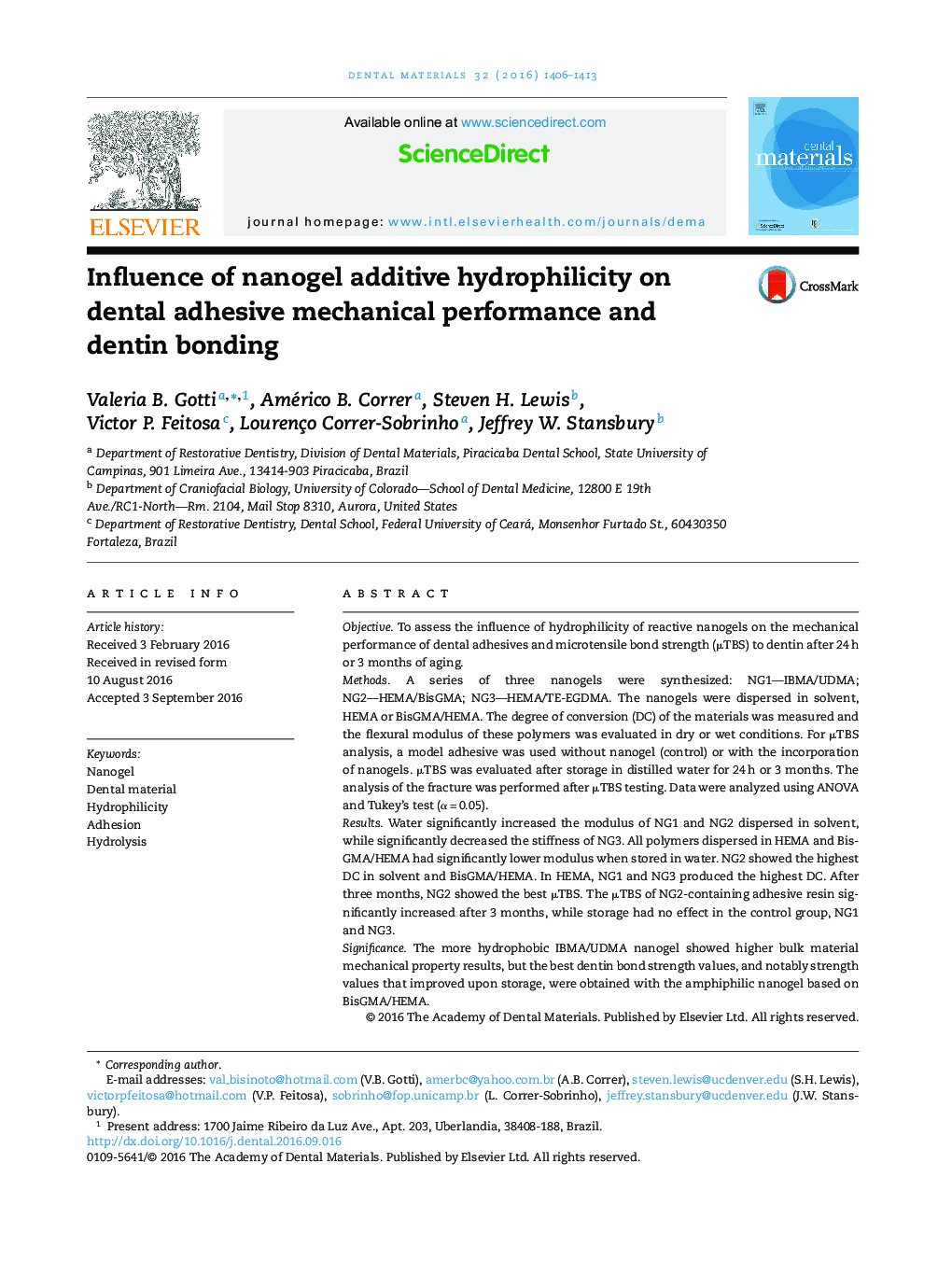| کد مقاله | کد نشریه | سال انتشار | مقاله انگلیسی | نسخه تمام متن |
|---|---|---|---|---|
| 5433202 | 1398057 | 2016 | 8 صفحه PDF | دانلود رایگان |
- The hydrophilicity of nanogel may affect the performance of the adhesive.
- Hydrophobic nanogel had less degradation and the best mechanical properties.
- An amphiphilic nanogel showed the highest bond strength values.
- The strongest material did not show the best interaction with the substrate.
ObjectiveTo assess the influence of hydrophilicity of reactive nanogels on the mechanical performance of dental adhesives and microtensile bond strength (μTBS) to dentin after 24 h or 3 months of aging.MethodsA series of three nanogels were synthesized: NG1-IBMA/UDMA; NG2-HEMA/BisGMA; NG3-HEMA/TE-EGDMA. The nanogels were dispersed in solvent, HEMA or BisGMA/HEMA. The degree of conversion (DC) of the materials was measured and the flexural modulus of these polymers was evaluated in dry or wet conditions. For μTBS analysis, a model adhesive was used without nanogel (control) or with the incorporation of nanogels. μTBS was evaluated after storage in distilled water for 24 h or 3 months. The analysis of the fracture was performed after μTBS testing. Data were analyzed using ANOVA and Tukey's test (α = 0.05).ResultsWater significantly increased the modulus of NG1 and NG2 dispersed in solvent, while significantly decreased the stiffness of NG3. All polymers dispersed in HEMA and BisGMA/HEMA had significantly lower modulus when stored in water. NG2 showed the highest DC in solvent and BisGMA/HEMA. In HEMA, NG1 and NG3 produced the highest DC. After three months, NG2 showed the best μTBS. The μTBS of NG2-containing adhesive resin significantly increased after 3 months, while storage had no effect in the control group, NG1 and NG3.SignificanceThe more hydrophobic IBMA/UDMA nanogel showed higher bulk material mechanical property results, but the best dentin bond strength values, and notably strength values that improved upon storage, were obtained with the amphiphilic nanogel based on BisGMA/HEMA.
Journal: Dental Materials - Volume 32, Issue 11, November 2016, Pages 1406-1413
